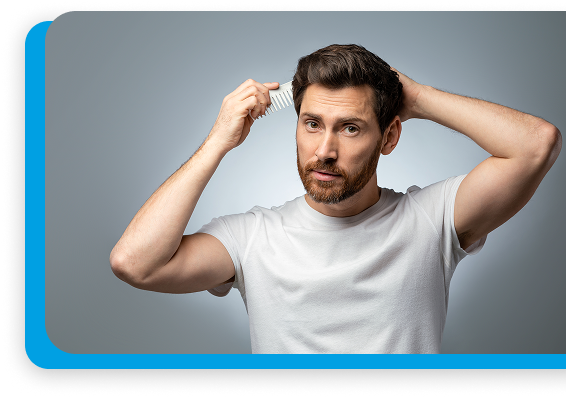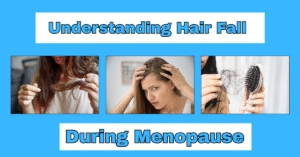Understanding Hair Fall During Menopause is essential for women going through midlife changes. As estrogen and progesterone levels decline, many women start noticing more hair fall—especially around the crown, hairline, or bald spots. This shift in hormones affects the hair growth cycle, leading to more hair entering the resting phase and less new hair growth.
If you’re seeing more strands in the shower or on your brush, you’re not alone. Many men and women facing androgenetic alopecia or other types of hair loss search for a solution for hair loss or even consider treatments like hair transplant surgeries.
The good news? You can take control. With a balanced diet, scalp care, and medical guidance, hair restoration is possible. Whether it’s through nutritional changes, PRP therapy, or advanced hair transplant procedures like Follicular Unit Extraction (FUE), Follicular Unit Transplantation (FUT), MHI, or DHI, there’s hope.
Knowledge is power—and it’s your first step to long-term hair regrowth.
Why Hair Falls During Menopause
Menopause can trigger significant hair follicle changes due to hormonal shifts. As estrogen declines, it can disrupt the balance with testosterone, leading to thinning, shedding, and weaker hair shafts. The donor site, where healthy hair grafts grow, might remain unaffected, making it a potential area for future transplant surgeons to use if considering hair transplant techniques.
Stress, poor sleep, and nutritional gaps during menopause can also worsen the situation. These lifestyle factors often trigger or accelerate hair loss in menopause and affect both the recipient area and general scalp health.
Signs of Menopausal Hair Loss
Some common patterns of menopausal hair fall include:
- Thinning across the scalp
- Receding hairline
- Noticeable shedding
- More visible scalp
- Patches or early signs of bald spots
This type of hair loss can lower confidence, but there are several ways to manage it.
How to Support Hair Growth During Menopause
Start with these steps:
- Eat iron-rich foods like spinach and lean meats.
- Add omega-3 fatty acids from flaxseeds or fish.
- Include biotin from eggs and avocados to support new hair growth.
- Use gentle shampoos and avoid heat styling, tight ponytails, or chemicals that stress the scalp.
These small actions help protect the donor area and keep your hair transplant expectations realistic if you choose to pursue surgery later.
Treatment for Hair Loss: What Are Your Options?
If shedding is severe, consult a dermatologist or hair transplant surgeon. Here are popular options:
- Minoxidil: An over-the-counter topical that boosts hair regrowth.
- Hormone Replacement Therapy (HRT): May help balance hormones—but check with your doctor.
- Platelet-Rich Plasma (PRP): Involves injecting your own plasma to stimulate hair follicle
- FUE Hair Transplantations: A modern method using individual hair grafts from the donor site.
- FUT Hair Transplantation: A technique using strips of skin with hair from the donor area.
- MHI & DHI Techniques: Innovative types of hair transplant methods offering high precision and natural results.
- Hair Transplant Experience: A personalized journey involving planning, extraction, and implantation of transplanted hair in the recipient area.
Cosmetic Solutions That Help
Not ready for surgery? These options can improve the look of thinning hair:
- Layered cuts and volume-building styles.
- Hair fibers and toppers to add density.
- Scalp micropigmentation to reduce visible scalp.
Every option—from nutrition to hair transplant procedures—aims to give a long-term solution to hair loss.
Final Thoughts
Hair fall during menopause is common, but it doesn’t define you. With the right mix of care, treatment, and possibly even hair transplant procedures, you can restore volume and feel confident again.
Whether you’re just starting menopause or already well into it, there’s a path forward—one that respects your journey and gives you options, from lifestyle tweaks to modern hair transplant techniques. Speak with experienced transplant surgeons to learn what’s right for you.
You deserve to look and feel your best—this chapter of life can be one of strength, growth, and new beginnings, including new hair growth.











